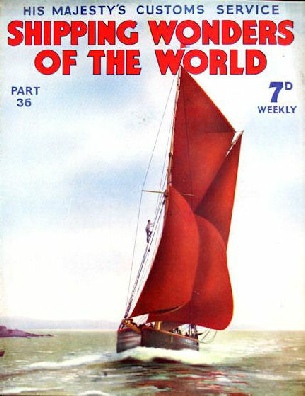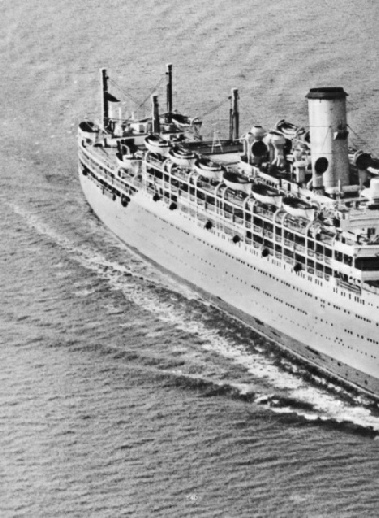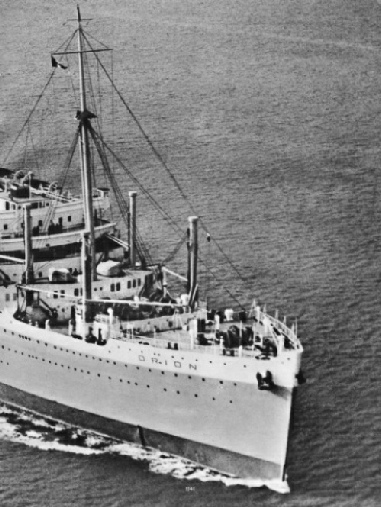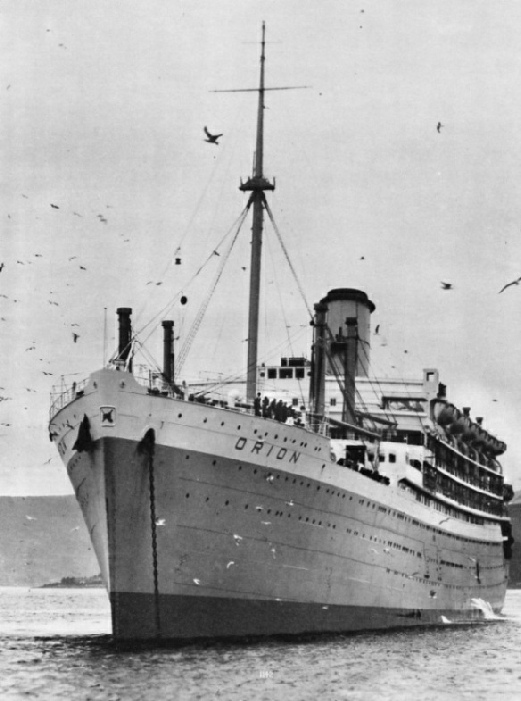
© Shipping Wonders of the World 2012-



Part 36
Part 36 of Shipping Wonders of the World was published on Tuesday 13th October 1936.
It included a centre photogravure supplement featuring the RMS Orion, which formed part of an article on this vessel.
The Cover
The cover of this week’s part is particularly attractive. It shows a Brixham trawler, its reddish sails showing up against the sea and the sky.

Contents of Part 36
Epic of the Motor Launches
Concluding section of this article from part 35.
The Restless North Sea
A remarkable feature of the North Sea is its shallowness, due to the submergence of dry land in prehistoric times. Some of Europe’s most important rivers flow into the North Sea, and for centuries its dangerous shoals and currents have been a challenge to seamanship. This chapter describes the shoals, ridges, deeps and coasts of this important waterway.
Fisherfolk of the Faeroes
From the Danish islands known as the Faeroes, nearly 200 miles north-west of the Shetlands, a large fleet of auxiliary fishing vessels sails very year to catch cod in North Atlantic waters. The fishing community in these islands is descended from the Vikings of olden times and the Viking tradition persists. This chapter gives a vivid account of the life of the fisherfolk.
RMS Orion
Many unique features characterize the Orient Line’s largest liner and make her one of the most interesting and important of the large passenger vessels built in recent years. In December 1934 a new departure was made in the ceremony of launching a ship. This was when the Duke of Gloucester pressed a button in Brisbane, Queensland, and launched by wireless the Orion, which was at that time on the other side of the world, at Barrow-in-Furness, Lancashire. The Orion, while giving the passenger the maximum of comfort and convenience, never for one moment deprives him of that feeling of being in a ship, and not in a “floating hotel”.
This is the ninth article in the series on The World’s Largest Ships.
RMS Orion (photogravure supplement)
The Orion at Sea
A SPEED OF 21 KNOTS is given by the two sets of turbines in the Orion. The turbines develop a total shaft horse-power of 24,000, and are designed to run at 1,715 revolutions a minute. Twins crews are driven through single reduction gearing. Either propeller has four blades of manganese bronze weighing 3½ ton, and has a diameter of 19 feet. Steam is supplied by four large and two small boilers burning oil fuel under the forced-draught closed-air duct system with open stokeholds. The Orion has an overall length of 665 feet, a moulded breadth of 82 feet and a moulded depth of 47 ft 6 in. She has a displacement of 28,400 tons and a draught of 30 feet.
The Orion
Photogravure Supplement
THE AFTER END OF THE SUPERSTRUCTURE viewed from the main deck. This impressive photograph shows to good effect the straight-forward shipshape character of the Orion. On the main deck - C Deck - is an open-air swimming-pool, with dressing-rooms, shower-baths and the tavern adjacent. There are eight decks in the Orion.
The Orion at Anchor
THE MAJESTY OF A GREAT LINER is well portrayed by this photograph of the Orion at anchor. The Orion is a notable addition to the fleet of the Orient Line, and she sailed on her maiden voyage from London on September 28, 1935. Her passage to Australia includes calls at Gibraltar, Palma, Toulon, Naples and Port Said. After she has passed through the Suez Canal, she calls at Aden and at Columbo, Ceylon. She accommodates 486 first-class and 653 tourist-class passengers, in addition to a crew of 466.



